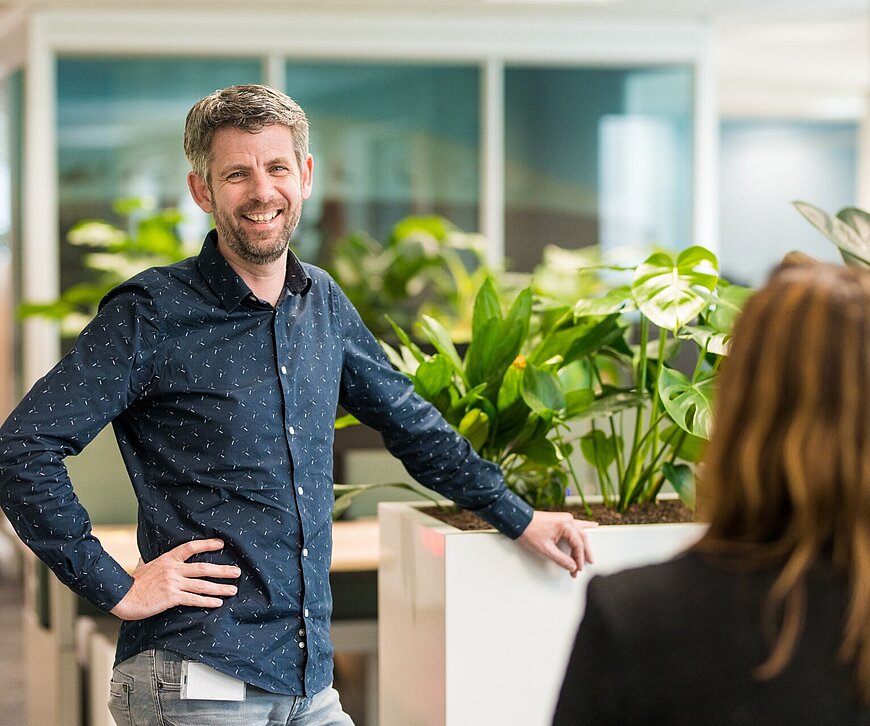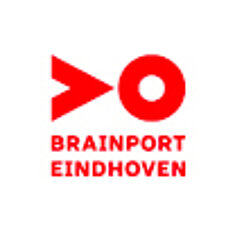
Sioux Technologies: ‘Edge-AI is the key to smart mobility’

Edge-AI combines the power of artificial intelligence with the advantages of edge computing — the local processing of data, for example in sensors, cameras, and IoT devices. Sioux Technologies is a specialist in the development and application of this technology and demonstrates this as a participant in the innovation project Digital Infrastructure for Future-proof Mobility (DITM). Joost Sannen: ‘Smart mobility and autonomous vehicles are going to change the world. We’re still far from there, but we’re getting closer at an increasingly rapid pace.’
Autonomous manoeuvring
Sioux contributes to DITM on two fronts: it provides cybersecurity consultancy and is developing the embedded architecture framework for applying multi-sensor fusion in Cooperative, Connected and Automated Mobility (CCAM).
Joost Sannen, Senior Software Architect at Sioux: ‘Within this project, we’re demonstrating how smart mobility can function, including several concrete use cases involving autonomous features. For example, we’re looking at buses doing automated halt manoeuvring, allowing passengers to embark and disembark, and driving off again. Two more examples include the autonomous manoeuvring of buses in depots and traffic light optimisation — vehicles and infrastructure working together to create green waves.’
Local processing
Autonomous vehicles take over visualisation, localisation, and navigation from the driver. This requires the use of AI — intelligent models that process vast amounts of data, interpret it, and make decisions. From a safety perspective, this needs to happen at lightning speed.
This is where the advantages of Edge-AI come into play. Running AI models locally in vehicles and infrastructure — instead of in the cloud — means data is processed directly where it is generated, such as in sensors, cameras, and IoT devices.
In short, applying Edge-AI is key to realising the mobility system of the future and is therefore an integral part of the DITM project.
Accurate modelling
CCAM is a digital framework for intelligent, autonomous vehicles that communicate with one another and with traffic infrastructure. A vital element is multi-sensor fusion, where data from multiple sensors — such as LIDAR, radar, cameras, and GPS — is combined in real time to create a highly accurate model of a vehicle’s surroundings.
Within DITM, Sioux is responsible for investigating the hardware architecture of the compute platform — the platform that calculates the models enabling perception functions.
Key focus areas include both the sensor-level data processing and the centralised processing within the zonal network.
Efficiency and reliability
Sannen: ‘In essence, we are providing a proposal — a kind of outlook. The end result is a document outlining the requirements for this development. This includes technical standards, types of sensors and their use cases, necessary sensor combinations, required capacity and availability, as well as the specifications the physical data network must meet to optimise efficiency, reliability, and energy consumption. The next step is prototype implementation of multi-sensor fusion for localisation; the foundation for further industrialisation.’
Impressive performance
What challenges is Sioux tackling in the DITM project? Sannen starts with the rapid pace of technological advancement. Progress is incredibly fast — what is considered state-of-the-art today could be outdated in six months.
Moreover, even though many major manufacturers are heavily investing, autonomous vehicles are still under development. It is an extremely complex technology.
‘Safety is the number one requirement for autonomous vehicles,’ Sannen emphasises. ‘But what exactly does that mean? There are manufacturers already producing impressive self-driving cars with remarkable performance, but that doesn’t necessarily guarantee safety in all situations.’
A win for everyone
How does Sannen view the future of smart mobility? ‘We’re still a long way off. There are significant technological hurdles to overcome — some are even cause for concern. But we’re getting closer all the time. We’ve all heard of Tesla’s autopilot and trials with autonomous taxis. Mercedes, for instance, is already very far along with its autonomous vehicle.
That smart, automated transport system of the future is coming, and Edge-AI is the key to evolving from a proof of concept to a fully mature system. Once it’s here, the impact will be substantial. More efficient, safer, and more sustainable mobility — everyone benefits, including us at Sioux.
We are all working on relevant, groundbreaking technology that is helping to improve the world, and we’re happy to invest in it, for example, through the DITM project. And in this case too, we’re not shying away from any challenge.’



